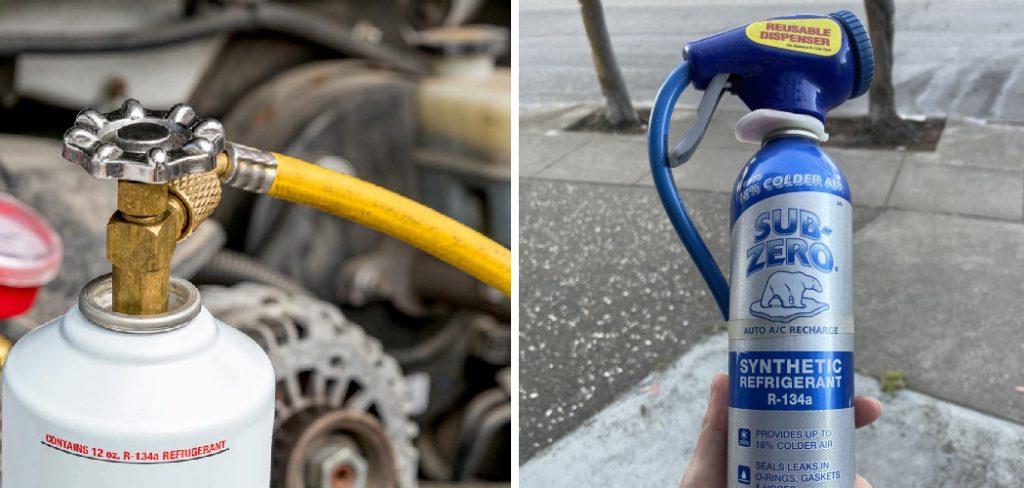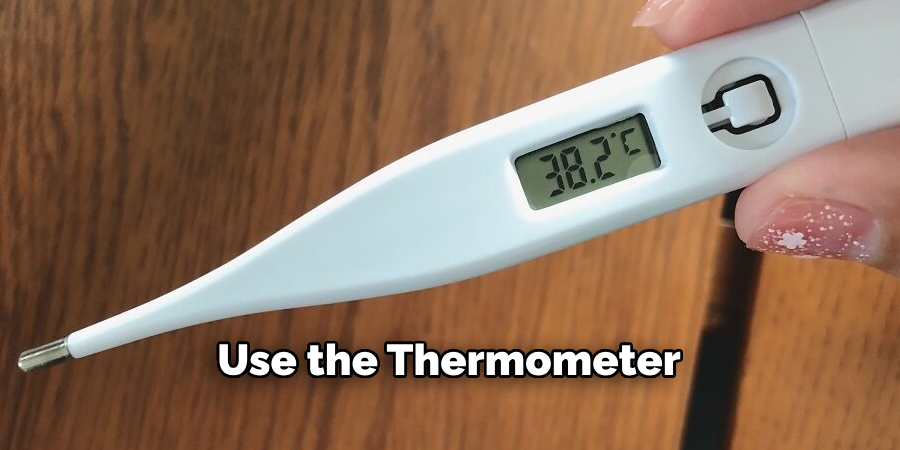Are you the proud owner of a Jeep Renegade, but finding yourself scratching your head when it comes to adding Freon to your vehicle? Don’t worry, you’re not alone! Many car owners, especially those who are new to automotive maintenance, can feel overwhelmed when faced with the task of recharging their vehicle’s air conditioning system.

But fear not, because in this comprehensive guide on how to put Freon in a jeep renegade, we will walk you through the step-by-step process of putting Freon in your Jeep Renegade, ensuring you stay cool and comfortable on those scorching summer days. So grab your tools, put on your mechanic hat, and let’s dive into the wonderful world of Freon recharging!
What is Freon?
Before we dive into the process of adding Freon to your Jeep Renegade, let’s first understand what exactly is Freon. In simple terms, Freon is a refrigerant that is used in air conditioning systems to help cool the air that circulates through the vehicle. It works by absorbing heat from the air and then releasing it outside of the car, which allows for cooler air to be circulated inside.
Why Do I Need to Add Freon?
Over time, the Freon in your car’s air conditioning system can start to deplete due to leaks or regular wear and tear. When this happens, you may notice that your AC is not blowing cold air as it used to. This is a sign that it’s time to add more Freon to your system. It’s important to keep your AC system properly charged with Freon for it to work efficiently and effectively.
Tools Needed
To put Freon in your Jeep Renegade, you will need a few tools such as:
- An R134a Refrigerant Kit
- Safety Glasses and Gloves
- A Pressure Gauge
- A Can Tap Valve
- A Thermometer
11 Step-by-Step Guide on How to Put Freon in a Jeep Renegade
Step 1: Prepare Your Vehicle
Start by parking your Jeep Renegade in a well-ventilated area, preferably outdoors. Make sure the engine is turned off and allow it to cool down for at least 30 minutes before starting the recharging process. You can also put on your safety glasses and gloves for added protection. It’s always better to be safe than sorry! The last thing you want is to end up in the emergency room with a Freon burn.

Step 2: Locate the Low-Pressure Port
The low-pressure port is where you will attach the refrigerant hose to add Freon to your vehicle. In a Jeep Renegade, this port is usually located on the larger metal tubing coming out of the compressor. Refer to your owner’s manual for the exact location and instructions. The port is usually covered with a blue or black cap marked “L” for low pressure. It’s essential to identify the correct port as connecting the hose to the wrong one can result in damage to your car’s AC system.
Step 3: Check the System’s Pressure
Before adding Freon, it’s important to check the pressure of your AC system. This will help you determine how much refrigerant you need to add. Use the pressure gauge to measure the low-pressure side of the system. The ideal pressure for a Jeep Renegade is between 25 and 45 psi. The pressure may vary depending on the outside temperature. However, if your pressure reading is below 25 psi, it’s a sign that you need to add more Freon.
Step 4: Connect the Refrigerant Hose
Attach the refrigerant hose to the low-pressure port, making sure it is securely connected. Then connect the other end of the hose to your R134a refrigerant kit. Make sure to follow the instructions provided by the manufacturer. You can also use the thermometer to check the temperature of the air coming out of your car’s vents. If it’s above 40 degrees, this means the system is low on Freon.

Step 5: Open the Valve
Once everything is securely connected, open the valve on your refrigerant kit to allow Freon to start flowing into the system. You should hear a hissing sound as the refrigerant enters the AC system. The process can take a few minutes, so be patient. Thoroughly read the instructions on the kit to ensure you are doing it correctly. It’s important not to overfill the system.
Step 6: Keep an Eye on the Pressure
As the Freon flows into your system, keep an eye on the pressure gauge. It should start to rise as more Freon is added. Remember to always add refrigerant in short bursts and not all at once. Overcharging can cause damage to your AC system and result in costly repairs. But don’t worry, the pressure gauge and thermometer will help you determine when it’s time to stop.
Step 7: Check the Temperature
After a few minutes of adding Freon, check the temperature of the air coming out of the vents again. If it has dropped below 40 degrees, this means your AC system is properly charged and you can turn off the valve on the refrigerant kit. The pressure gauge should also read between 25 and 45 psi. It’s essential not to overcharge your system as it can lead to problems down the road.
Step 8: Detach the Hose
Once you have added enough Freon, turn off the valve on your refrigerant kit and detach the hose from the low-pressure port. Be careful when removing the hose as some refrigerant may still b e in it. You can use a cloth to wipe off any excess refrigerant. You can also save the remaining refrigerant in your kit for future use.

Step 9: Clean Up
After detaching the hose, clean up any spills or mess that may have occurred during the process. Dispose of any used materials according to local regulations. It’s essential to properly dispose of used refrigerant as it is harmful to the environment. But don’t worry, most refrigerant kits come with proper disposal instructions. You can also contact your local recycling center for more information.
Step 10: Test Your AC
Start your Jeep Renegade and turn on the AC to check if it’s blowing cold air. If everything was done correctly, you should feel a significant difference in the air temperature. You can also use your thermometer to monitor the temperature of the air coming out of your vents. If it’s not cold enough, you may need to add more Freon. It’s always better to slightly undercharge your system and add more if needed.
Step 11: Repeat as Needed
If necessary, you can repeat the process until your AC system is properly charged with Freon. Keep an eye on the pressure gauge and thermometer to ensure everything is at the correct levels. Once completed, you can enjoy a comfortably cool ride in your Jeep Renegade again! Always remember to follow the manufacturer’s instructions and safety precautions when working with refrigerant.
Following these steps on how to put freon in a jeep renegade will ensure that you properly add Freon to your Jeep Renegade’s AC system. It’s important to regularly check and maintain your car’s AC system to keep it running efficiently. Remember, prevention is always better than cure!

Make sure to schedule regular maintenance checks with a professional mechanic to avoid any potential problems with your vehicle’s air conditioning. With the right tools and knowledge, you can easily recharge your Jeep Renegade’s AC system and keep it running cool for all your summer adventures. Happy driving!
Conclusion
As we come to the end of this comprehensive guide on how to put Freon in a Jeep Renegade, it’s worth recapping all the valuable information we have covered. From understanding the importance of Freon and its role in your vehicle’s air conditioning system to learning about the different components involved and how to identify any potential issues, you now have a firm grasp on everything related to your vehicle’s coolant. But, remember, maintenance is key! Don’t wait for your car to break down before checking and refilling the Freon levels.
Make it a regular part of your routine car care and trust me, you’ll thank yourself later. Keep in mind that it’s also crucial to follow safety precautions and follow proper disposal methods when dealing with Freon. But most importantly, never hesitate to seek professional help if necessary. Your local mechanic or dealership will be more than happy to assist you with any concerns or questions regarding your car’s Freon levels.

About
JeepFixes Team is a skilled author for Jeep Fixes, bringing 6 years of expertise in crafting a wide range of jeep fixes. With a strong background in jeep fixes work, JeepFixes Team’s knowledge spans various types of fixtures, from decorative pieces to functional hardware, blending precision with creativity. His passion for jeep fixes and design has made him a trusted resource in the industry.
Professional Focus:
Expert in Jeep Fixes : JeepFixes Team aesthetic specializes in creating durable and innovative jeep fixes, offering both appeal and functionality. His work reflects a deep understanding of jeep fixes techniques and materials.
Sustainability Advocate : He is dedicated to using sustainable practices, ensuring that every fixture is crafted with eco-friendly methods while maintaining high-quality standards.
In his writing for jeep fixes, JeepFixes Team provides valuable insights into the latest trends, techniques, and practical advice for those passionate about jeep fixes, whether they are professionals or DIY enthusiasts. His focus on combining artistry with engineering helps others discover the true potential of jeep in design.
